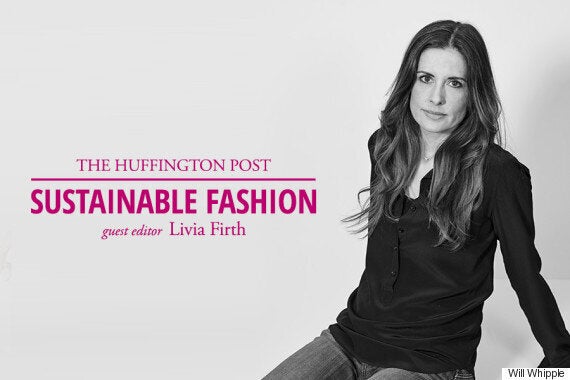This blog is part of a month-long focus around sustainable fashion across HuffPost UK Style and Lifestyle. Here we aim to champion some of the emerging names in fashion and shine a light on the truth about the impact our appetite for fast fashion has around the world.

Growing up I became fascinated with stories from an early age. I will never forget sitting on the end of my bed watching E.T. as tears fell down my face. That week I got a hold of an old camera and began what has become a lifelong obsession with using filmmaking to tell stories.
Ever since that first moment on the end of my bed, I have become increasingly convinced of this one idea. That stories shape the world. The stories we believe, just like the stories we tell start to define the world we live in today and the future we choose to create tomorrow. All throughout history stories have served to move us forward or hold us back. The real danger is in those moments when we come to believe stories that are not true.
A few years ago I began work on a film about clothing and the impact of fashion on our world (The True Cost). Up until that point I had never thought twice about anything I bought but suddenly, based on a series of tragic clothing factory disasters, I was interested to understand where my clothes came from and what kind of an effect it was having on people and places around the world.
We live in a time when clothing is more accessible, more affordable and more disposable then ever before. I, like so many of my peers have only experienced a world where clothing is something that we use and use up, where it is normal to wear and wear out clothes quicker than ever. And why not?
The story we have been told about clothing is simple. People in other parts of the world (who desperately need jobs) are working to make this clothing. Someone somewhere is taking care of these people and the most important thing we can do is to keep buying more. We really can have it all for nothing.
After spending the last few years traveling to countries all over the world to make The True Cost, I have seen first hand in unforgettable ways that the true story is far less beautiful than we have been lead to believe. The unavoidable reality is that somewhere someone always pays the price and the further we buy into cheaper disposable clothing both people and the planet suffer.
The people are farmers, garment factory workers, men and women working in dye houses and leather tanneries. People that globally account for the poorest of the working poor. And as no other part of the supply chain has gotten cheaper (transportation, raw materials etc.) human labour continues to be the element that can be forced down to artificially low levels. The result is millions of people working in dangerous conditions unable to make a living wage that supports their families in some of the world's poorest slums. The story that has been sold as a one-way ticket out of misery is in so many cases actually further entrenching systemic poverty.
As for the planet, the situation has grown equally dire. In an economic system that only measures profit, we have no metrics in place to quantify the increasing toll this industries is making. The amount of natural resources used in the creation of clothing is enormous and as our appetite for cheap throw-away fashion is growing it is unsurprisingly generating staggering amounts of waste.
This story of having it all, more and more clothing at shockingly low prices it turns out has been an incredibly costly lie. It has been a story told and sold by those who stand to profit most by selling us on the idea of faster and faster fashion.
But this is why I am so fascinated by stories. Because stories can always change.Stories change when people become aware of reality and possibility. When we open our eyes to the way things actually are and open our hearts to the possibilities of what could be. We have more access to information than ever before and now is the time to use that information to rewrite the story to include all of the hearts and hands that touch the things we wear.
Before we can see the needed transformation in this industry, before we can truly question the ill equipped economic model underneath it all, before we can account for the true cost of what we consume, we need a new story. A story that re-describes human beings as people first and foremost, not cogs in a machine. A story that recognizes the profit of some must not come at the expense of so many.
And a story that understands that we live on a planet that has very real limits, many of which we are stepping dangerously far beyond.
In a world of increasing inequality, at a time of severe planetary crisis and in a moment when we can feel overwhelmed by the challenges in front of us - I believe telling a new story about clothing is a key that could open many doors. As a crucial part of our lives, fashion weaves a thread that unites the world reminding us all of just how connected we truly are. As we begin to open our eyes and hearts to the truth that there are people behind the things we wear, let us embark on the needed task of telling a new story stepping forward.
HuffPost UK Lifestyle is running a special series around Sustainable Fashion for the month of September. Livia Firth is creative director of Eco-Age and founder of The Green Carpet Challenge, and will be guest editing on 18 September. If you'd like to blog or get involved, please email us.